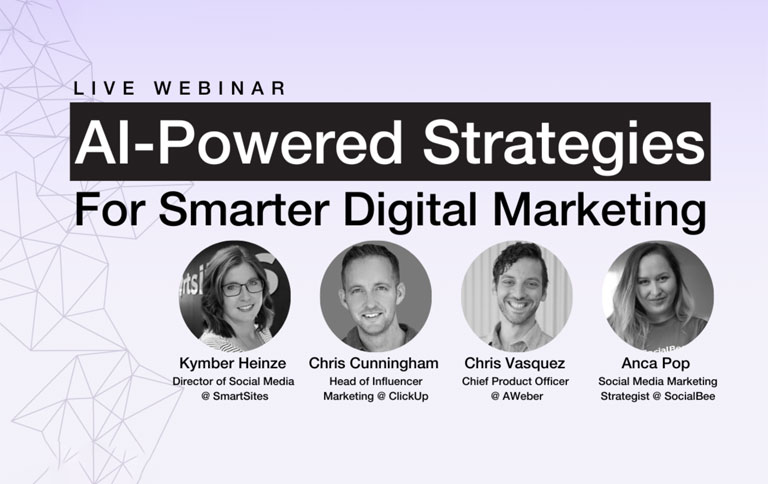These Are the Smart COVID-19 SEO Moves To Make Today!

Olivia Hendrzak
Project Manager

The initial fright and surprise of the coronavirus has somewhat subsided. For numerous industries and their companies, what became clearer as time went by was the economic impact that had and would continue to occur. Many companies started reducing costs and dropping into risk management mode. For some, high on the cost reduction list was the slashing of PPC budgets.
Fortunately, within the digital market, the COVID-19/SEO relationship has not been as devastating as was the relationship between the coronavirus and other corporate departments. In fact, even more than before, companies started investing in SEO and in some cases, the coronavirus had no effect on it at all.
Investing in SEO
To reap the benefits of investments in content marketing and SEO, it can take months. Most companies understand this. Once the world gets back to a new type of normal, something we’re all more familiar with, ROI for companies that have invested in SEO and content marketing will begin to grow. This “back to a new normal” time is being referred to as the “post-COVID world”.
The situation the world still finds itself in, in many areas, means a good amount of free time for many. By harnessing that time, both online and off-line, numerous companies began creating impressive content. That’s a smart move – preparing now for the post-COVID world.
Here, we are going to explore some ways through which you can take advantage of the situation the coronavirus has put us all in. Let’s figure out how to make something good and positive out of a bad situation.
What’s Your Audience Looking For?
As soon as possible, you’re going to need to see some results. Particularly if your company was one of the numerous businesses that dropped into survival mode. It’s time to focus on content marketing and SEO, because you probably can’t put your funds toward PPC right now.
By improving existing content you’ll stand the best chance of achieving quick results. Choose content that is already performing pretty well and that which potential customers seek. Use some or all of the following for the development of your content.
- Target Audience Tools – Use tools to identify your target audience: i.e., keyword research, Google analytics/acquisition tab, Google analytics/audience tab, etc.
- Markup Language – The brick-and-mortar of the web is markup languages. It’s what creates the foundation of a site. Examples: XML, SGML, HTML, BBC.
- For Longtail Queries, Create Fresh Short Form Content – During your keyword research (see below) you should have found some low-search-volume question-like queries. It’s time to incorporate those. You may feel that an undertaking such as this won’t have very high search volumes, individually. But they’re worth pursuing for their low competition and combined search volume. Into fresh short form content pieces, incorporate these queries.
- Existing Content Can Be Consolidated – Take a good hard look at your content. Have there been pages that didn’t particularly perform well? Put together highly similar content and give it a better fighting chance by creating a stronger page from the high points of each piece.
- Existing Content Should Be Improved – With just a few minor alterations here and there on your first page rankings, you could well win a featured snippet or at least move up a few spots. This could mean creating a separate page or adding sections. You may also be able to win that featured snippet with targeting queries containing specific content. It might be a little harder for second page rankings (see above “Existing Content Can Be Consolidated).
- Research Keywords – Do you know what terms people frequently put in search engines? The process of finding out what those words are and analyzing them is known as keyword research, and it’s crucial to your site so that you can use those same words/terms.
All of this is not to say, however, that you shouldn’t ever add brand new content again. Consider the immediate business climate as it relates to your company or industry and create content that is relevant. What does that mean? We are referring to new content that will immediately drive traffic to your site. It will be picked up quickly.
Example: One company posted a list of COVID-19 deals or specials, knowing that individuals and families have been economically affected by the coronavirus and business closings/cutbacks. Imagine what kind of traffic that generated!
Your Target Audience Will Usually Prefer Certain Types of Content
We are going to offer one more piece of advice, just in case you’ve still got some free time. Consider the post-COVID world and invest in some target audience preferred content. Where your website’s customers and visitors are concerned, this may not initiate an immediate search. But if you maintain it well, with this type of content, you’ll usually see consistent growth.
Later on, you’re going to see this type of investment deliver the ROI you’re hoping for. The following content types are usually produced by this type of work:
- E-books
- Glossaries
- Tools
- Statistics
- Resource pages
Here are some topic/focus suggestions (that have already proven effective for other companies):
- Through various mobile devices, show how people access the web.
- To help back up people’s arguments and beliefs, post something useful like a collection of statistics.
- Provide a resource that assists in the quick location of preferred SEO tools.
- Give something away for nothing. It may not generate more new customers, but they will remember you for giving something of quality away and not charging for it.
In Closing
Whether the coronavirus has left you with an inordinate amount of time on your hands, or if you’ve only been gifted a little bit of free time, there are lots of ways to make it work for you.
To achieve the quickest results, locate the low hanging fruit and focus on that first. Next, look at what kind of content will always be needed and wanted by your target audience. Invest in that with any free time you may have left.
 Free
Consultation
Free
Consultation Free
Google Ads Audit
Free
Google Ads Audit







